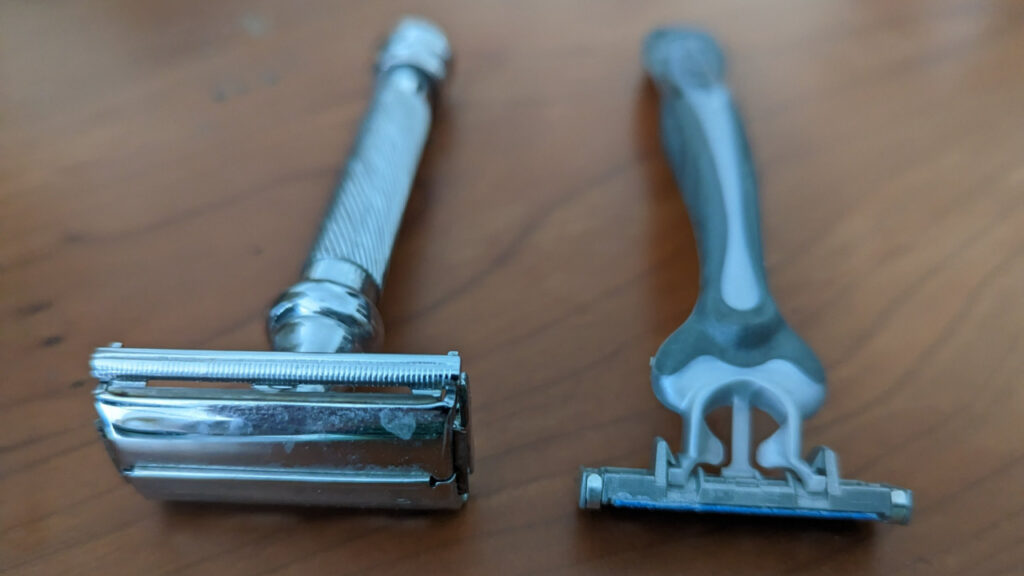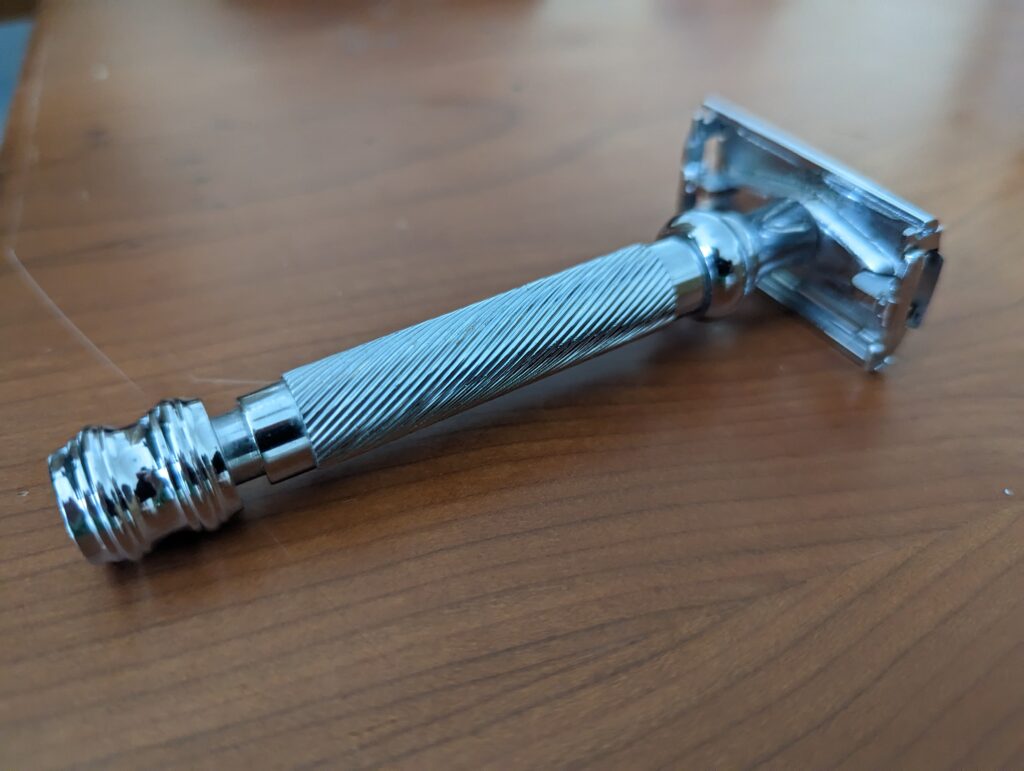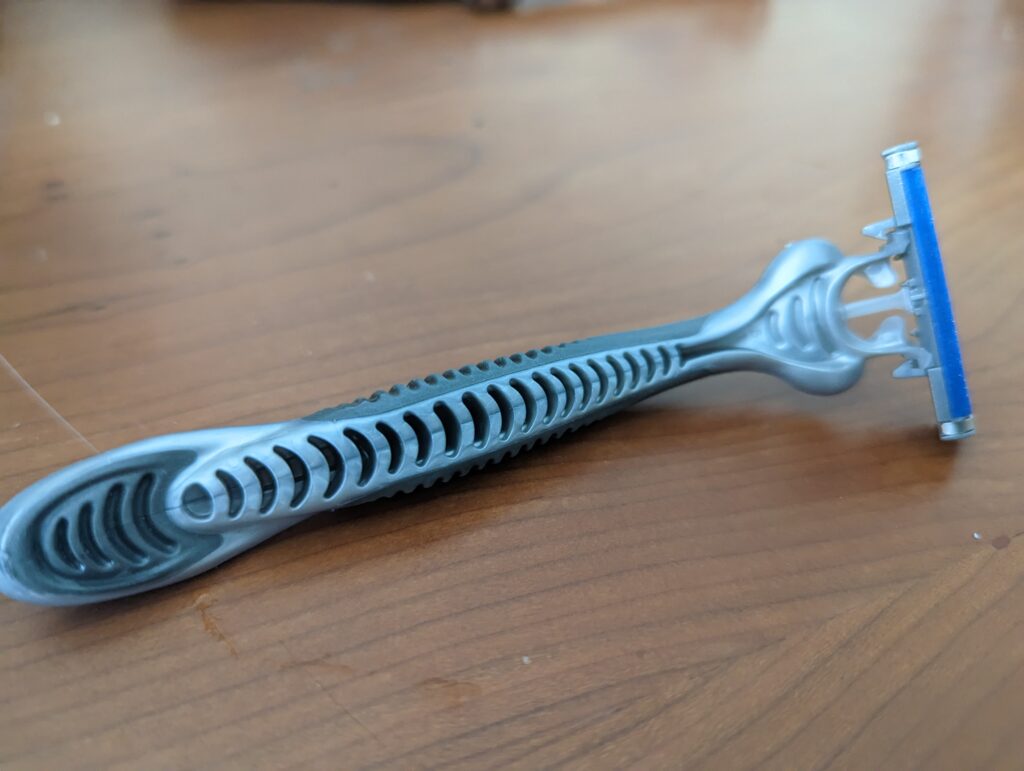
Deciding between a safety razor and a disposable razor can be a daunting task. Are you looking for an efficient, cost-effective way to shave? Are you seeking an eco-friendly alternative to single-use plastic razors?
Table Of Contents
−- Safety Razor vs Disposable Razor: Understanding the Differences
- The Benefits of Reusable Safety Razors
- Disposable Razors: Quick and Convenient, but at What Cost?
- How to Get an Immersive Shaving Experience with a Safety Razor
- Choosing the Right Blade for Your Safety Razor
- Caring for Your Safety Razor: Ensuring a Long-Lasting Experience
- In Conclusion
If so, then this comprehensive article is for you! We’ll cover the pros and cons of safety and disposable razors to help you make an informed decision.
Safety Razor vs Disposable Razor: Understanding the Differences
Safety razors offer a more traditional wet shaving experience compared to disposable razors. They feature a replaceable, stainless steel razor blade that is extremely thin and easy to recycle. The main difference between a safety and a cartridge razor lies in the tool’s head design.
Safety razors use a single, double-edged blade, while cartridge razors have multiple blades set in a single head. The handles of a safety razor are typically made of stainless steel, making them more environmentally friendly than disposable cartridges.
Furthermore, these razors are much more economical in the long run because they require less frequent replacement, and the blades can be recycled. Finally, they can help reduce skin irritation, shave bumps, and ingrown hairs, which are common with cartridges or electric razors.
The Benefits of Reusable Safety Razors

Reusable safety razors offer several advantages that make them an attractive alternative to disposable cartridge razors:
- Sharp Blades: Safety razors have sharp and precise blades that give users a closer shave than disposable razors. The superior stainless steel blades are thinner and sharper, slicing the hair at a better angle and reducing skin irritation and ingrown hairs.
- Environmentally Friendly: Safety razors avoid the use of plastic in their design, making them the most eco-friendly and guilt-free shaving option. Stainless steel construction makes them sustainable and long-lasting.
- Less Irritation and Fewer Cuts: The single blade design of safety razors provides more control over the angle of the blade, reducing the chances of cuts and skin irritation. They can also access hard-to-reach places with ease.
- Ideal for Sensitive Skin: Safety razors are less likely to cause irritation, redness, and ingrown hairs. They require more care and attention than disposable razors, which can benefit those with sensitive skin.
- Long-term Cost Savings: Safety razors have a higher initial cost, but they offer significant savings over time. Blades are cheaper and last for many shaves, making safety razors more economical in the long run compared to disposable razors.
Disposable Razors: Quick and Convenient, but at What Cost?

Disposable razors come in two main types:
- Completely Disposable: This type of razor features a disposable handle and blade combination. It’s convenient and easy to use, but not the most cost-effective option.
- Cartridge Razors: These razors use replaceable cartridges containing multiple blades. They might be slightly more expensive upfront, but can save money in the long run. However, both disposable razors lack the precision and control of a safety razor.
How to Get an Immersive Shaving Experience with a Safety Razor
Safety razors provide an unmatched shaving experience, requiring more attention and precision for a clean, close shave. The Bombay Shaving Company Precision Safety Razor System is designed for a smooth, one-stroke shave with minimal irritation.
A shaving kit is a great introduction to the world of shaving. Using the right blade for your skin type can achieve an even closer shave while reducing skin irritation and its associated side effects. With a reusable safety razor, you can enjoy a luxurious shaving experience while saving money in the long run.
Choosing the Right Blade for Your Safety Razor
Once you have decided to switch to a safety razor, the next step is to choose the right blade for you. Keep in mind that everyone’s skin is different; therefore, each individual must find the blade that works best for them.
Start with a mild blade and then move up or down depending on your skin sensitivity, the coarseness of hair, and how close of a shave you prefer. Blades differ in sharpness and durability, so some experimentation may be necessary before you find the right blade.
Caring for Your Safety Razor: Ensuring a Long-Lasting Experience
Proper cleaning and maintenance are essential in keeping your safety razor in top condition, providing a longer and more pleasant shave. Follow these tips to care for your safety razor:
- Clean the razor after each use and store it in a dry place.
- Replace the blades regularly.
- Use a brush to remove any lather or other residue that may have built up.
With proper care and maintenance, your safety razor can provide a comfortable shave for years to come.
In Conclusion
Safety razors and disposable razors each have their pros and cons. Safety razors offer a more traditional, eco-friendly, and cost-effective shaving experience, while disposable razors provide quick and convenient options. Ultimately, the choice between safety and disposable razors depends on your personal preferences, budget, and environmental concerns.
By understanding the differences and benefits of each type of razor, you can make an informed decision that best suits your needs. Happy shaving!
Last update on 2024-04-18 / Affiliate links / Images from Amazon Product Advertising API
Affiliate Disclosure: This post contains affiliate links, which means I may receive a small commission, at no extra cost to you, if you make a purchase using these links.

Jay Kang
Just because i'm asian does not mean I don't need shaving. I always wanted to grow a beard when I was young, now I need to shave because hair growth for me is a problem. I'm going through what every man will and has gone through before.






